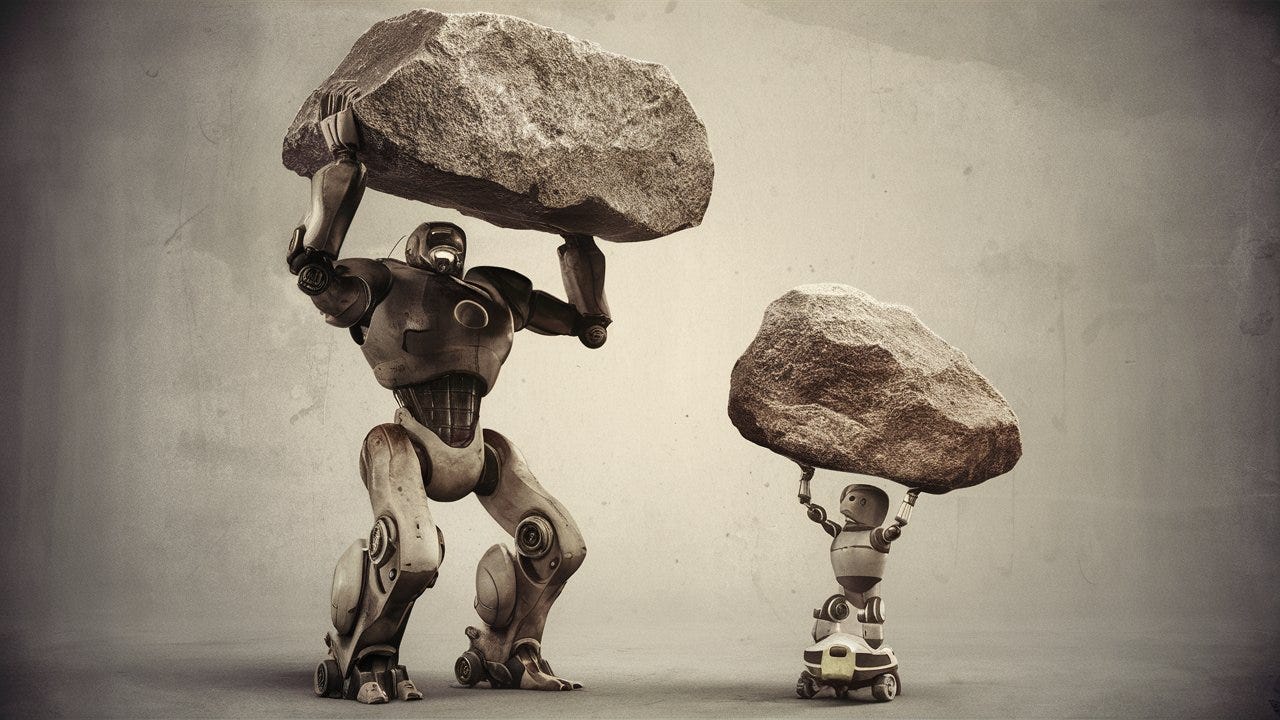AI predictions for 2025 (Part 2)
Another week, another four AI predictions for the year ahead.
If you missed predictions 1-4, they’re over here.
My first four predictions were company-focused (things Google, Meta, OpenAI and Amazon might do in 2025). My next four are about industry-wide capabilities and adoption.
5.) AI assistants will gain meaningful persistent memory

Large Language Models (LLMs) aren’t constantly learning. Once trained and released into the world, they remain the same and any new information you want them to take account of in their responses needs to be added in using techniques such as Retrieval Augmented Generation (RAG).
This has led to ‘LLM + Search’ experiences like Perplexity and ChatGPT search, where the language abilities of an LLM are combined with the indexing and topicality of a search engine. It has also prompted AI companies to release features which try to mitigate LLM’s inability to learn anything about you personally.
OpenAI’s initial mitigation was to ask you to proactively inform ChatGPT what you wanted it to know about you via Custom Instructions. In September, it added ‘Memory’, which attempts to store salient bits of information about you gleaned from your interactions with ChatGPT.
However, what ChatGPT determines is worth remembering can feel a pretty arbitrary (real example: ‘Dan prefers puns with a sharper and more creative edge’). It’s possible to explicitly ask it to remember things but this feels pretty unnatural. The volume of memories is also constrained by a token limit. Once the limit is reached, users must delete old memories to make space for new ones.
An AI assistant’s ability to remember details from earlier within a conversation is limited by the size of its context window (the amount of information it can hold in its ‘working memory’ whilst generating responses).
I anticipate AI assistants’ short and long-term memory will both materially improve over the course of this year, as context windows continues to grow (MiniMax-01, released last week, has a 4 million token context window - 31 times larger than ChatGPT’s - whilst Magic AI has trained a 100 million token context model) and new approaches to long-term memory are developed.
Assuming you’re willing to accept the privacy trade off, an AI assistant who remembers has much greater utility.
Apple, Google and Meta potentially have a significant advantage in being able to bring a wealth of other personal information, not gleaned from chatbot exchanges, to bear to their assistants’ responses.
The case against: The efficiency trade off involved in increasing the volume of memories being factored into each response may be too great without significant technical breakthroughs, which may not come in 2025.
6.) Character consistency in AI visuals will become trivial
Maintaining consistent characters across (and in the case of video, within) visual AI output has been a longstanding challenge. Midjourney introduced its Character Reference feature last March, although it struggled with reference images not generated by Midjourney.
The release of Flux in August popularised the use of LoRA to fine-tune open source models to replicate someone’s likeness using just a handful of reference images. However, it required a fair bit of fiddling around.
In December, Pika upped the accessibility with the release of Pika 2.0 with Ingredients, enabling users to upload a single image of a character, object or setting and have it seamlessly integrated into dynamic scenes (see above video).
As with AI-generated video more generally, the quality is currently variable. However, I expect the quality to improve dramatically this year to the point that rendering consistent characters from a small number of reference images is widely available functionality in both image and video generators.
I anticipate the same progress with object consistency, greatly increasing the utility - and therefore adoption - of AI image and video generators in advertising creative.
The case against: Going from ‘nearly good/reliable enough’ to ‘good/reliable enough’ may be harder/take longer than I’m anticipating (see self-driving cars). Rollout may also be inhibited by concerns over misuse (although open source models will no doubt continue to forge ahead).
7.) Kids animation and online creators will lead the adoption of on-screen AI
Not all content genres, formats and distribution channels are equally forgiving of on-screen AI use and imperfections. Naturalistic live action drama on broadcast TV is the most unforgiving of all. As well as a sky high quality bar where any imperfections will be seized upon, AI use in this context triggers our worst fears about AI replacing human craft.
At the other end of the spectrum sits kids animation on YouTube, combining an audience who are less likely to be thinking about how a piece of content was made and more forgiving of any oddities, with a format with greater latitude and a distribution platform with a different set of quality expectations (I recommend reading Doug Shapiro’s thought-provoking post on the changing definition of quality in media).
Online creators are far more incentivised than established media players to adopt AI in content creation. It affords them capabilities that were previously out of reach, they have less fear of legal action, no fear of industrial action and their use of AI isn’t being scrutinised by the press (unlike established media).
The case against: Animators and online creators may be more circumspect than I’m anticipating and/or the mighty algorithms of YouTube and TikTok might be tweaked to reduce the prominence of AI-generated/assisted content (although how will they know?)
8.) Smaller, more efficient AI models will proliferate and open source will close the gap with proprietary models
Whilst the AI giants continue to invest billions in building energy-hungry data centres, material progress in being made in increasing the efficiency of AI models.
Last month Microsoft released its latest small language model, Phi-4, which “outperforms comparable and larger models on math related reasoning due to advancements throughout the processes”. Notably it did so on a open source basis, enabling others to learn from it and build on top of it.
On Christmas Eve, ByteDance (TikTok’s parent company) shared research detailing more efficient techniques for image generation.
On Boxing Day, DeepSeek (another Chinese company) released DeepSeek-V3 on an open source basis. The model was more efficiently trained than other leading models, whose performance it matched.
Whilst Meta’s commitment to (pseudo) open sourcing its AI models might be primarily motivated by a desire to undermine its competitors’ business models, it’s still having a positive effect on open source AI development, where model efficiency is more of a natural priority.
I expect this trend to accelerate in 2025, with major breakthroughs in model efficiency and open source models increasingly troubling OpenAI and Google’s proprietary models at the top of the leaderboards.
The case against: The recent breakthroughs in developing more efficient models may not be the start of a trend, with smaller gains to be had in 2025. As OpenAI continues to talk up the magnitude of its internal progress, it’s possible that it releases a new model that re-opens the gap between proprietary and open source models.
That’s it for this week. Stay tuned subscribed for my final four predictions.





